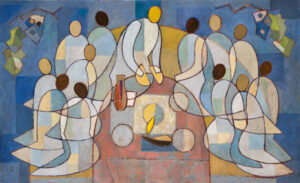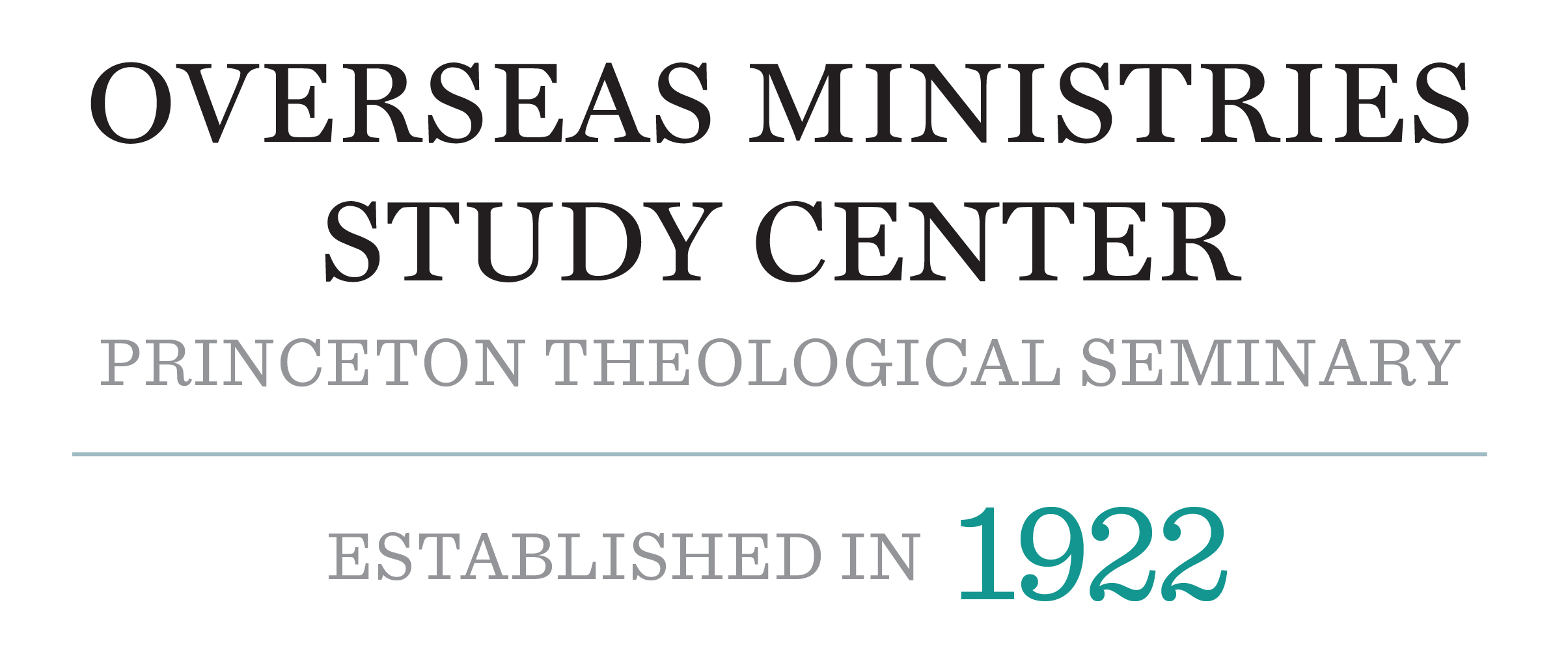By Thomas Hastings – Executive Director – OMSC@PTS
This is the eigth in a series of eight posts that spotlights paintings from our Artist in Residence program in dialogue with Christian scripture to offer spiritual windows for reflection and prayer. These reflections are based on Princeton Seminary’s Summer 2022 Chapel series. You can view the service from which this post is based HERE
SCRIPTURE READING : Romans 12:3-5
Here we are at the end of summer on the cusp of a new academic year. Over the course of this past year, we’ve spotlighted many pieces of artwork for prayer and reflection. This series concludes with one last beloved painting from the OSMC collection. Compared to the rest of the selections we’ve viewed, this one seems quieter somehow. I think back to the “Road to Emmaus,” the one where the resurrected Jesus is depicted as a woman laughing it up with friends in a night club or, the surprising, joyful “Song of Solomon,” or the imaginative, colorful “Creation.”
This is “We All Are One in Jesus” by Soichi Watanabe, who is from Japan. He was the Artist in Residence at OMSC in 2008. He said this work is a reflection of his time at OMSC. He wrote “Our life consisted of studying together, worshiping together, and praying together with staff and participants from Asia and Africa. This picture was produced in gratitude for this grace.”

All One in Jesus. There are separate bodies, but they look so similar and they overlap. There are faces, and, differences exist between them, notably the faces are different colors, but they are also so similar in their lack of features.
Counting the number of figures, it could be Jesus and the disciples. It could be the Last Supper and this could be Jesus. Looking at it that way we realize we all look like Jesus, or Jesus looks like each of us.
One observation is that Watanabe minimized the particulars that can separate us from others to show we are all one people, regardless of where we come from. There is a sameness here, there is a union. We are one because all are all part of a common humanity. We are also one because we are at the table together, and the table encompasses us all. We are the body of Christ and members of one another.
At the same time that we are one, there is also a differentiation. These are individual bodies, and faces. There is some specificity, not an undifferentiated mass. There is a spiritual reality here, of a one-ness that exists. There is a material specificity here, that individual bodies exist and the two can’t be separated.
A year ago I attended a webinar co-sponsored by the Princeton Seminary’s Center for Contemplative Leadership, directed by Dr. Bo Karen Lee. One of the presenters was Patrick Saint-Jean, a Jesuit, born in Haiti, now teaching psychology, and the author of “The Spiritual Work of Racial Justice,” a devotional book based on the writings of Ignatius.
Father Patrick says the body of Christ has a spiritual reality. But the incarnation means that spiritual and physical reality has been merged into an indivisible whole. We can’t separate our faith in Christ from the human flesh of the historical Jesus, the particularity of Jesus must also be expressed within the mystical body of Christ. Each of us with our individual grace and brokenness is called to participate in the body of Christ. The body of Christ cannot be complete if each member is not visible and seen.
In other words, We’re all, each of us, in this, together.
Until we welcome everyone at the table, the table is not complete. Until we know that we are welcome at the table, the table is not complete. Until we see the face of Christ in each other, the table is not complete.
As Patrick Saint-Jean says, “If my sibling is not at the table, we are not the flesh of Christ. If my sister’s mark of sexuality must be hidden or obscured, if my brothers mark of race must be disguised, if my siblings mark of culture must be repressed, then we are not the flesh of Christ. Until we embrace all bodies, and until all bodies find themselves embraced, we won’t fully understand the love, hope, grace of being one in Jesus Christ and what it means to live and move and love as his body in the world.
In other words, Until we are all free, we are none of us free.
Come quickly, Holy Spirit, open our eyes and hearts, our bodies and our spirits, make us one in Jesus Christ.




